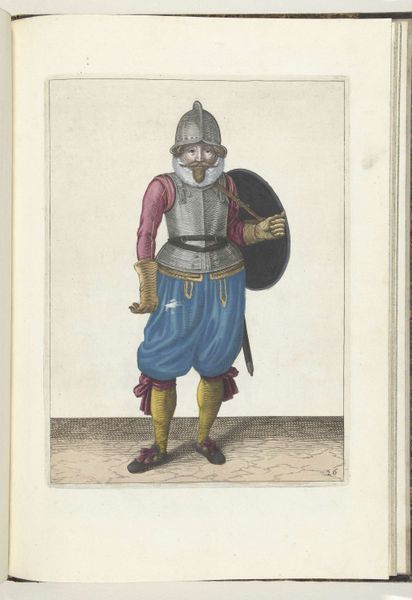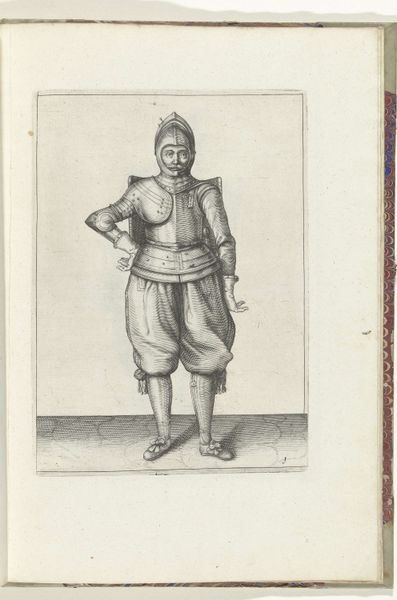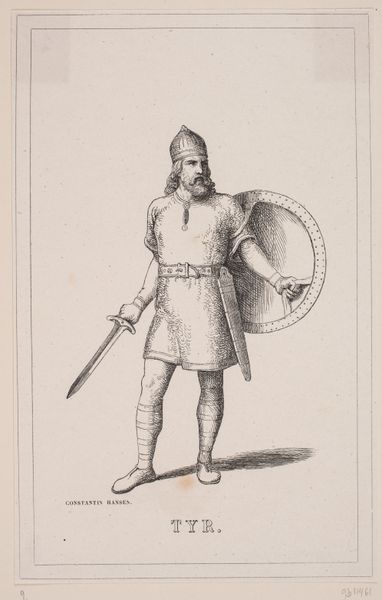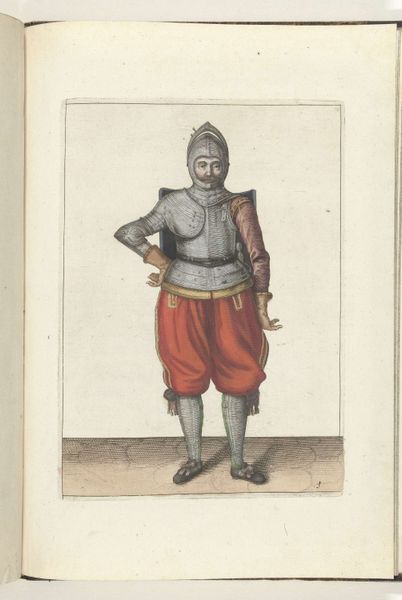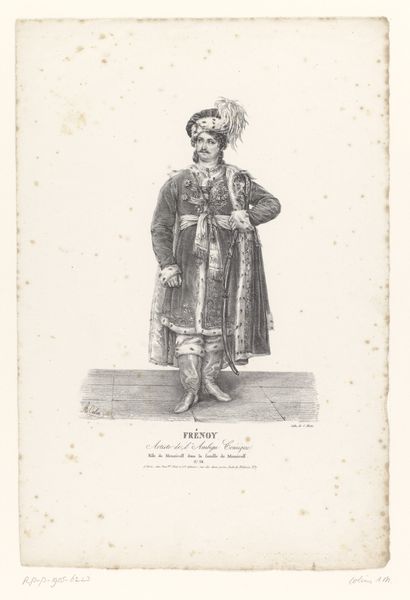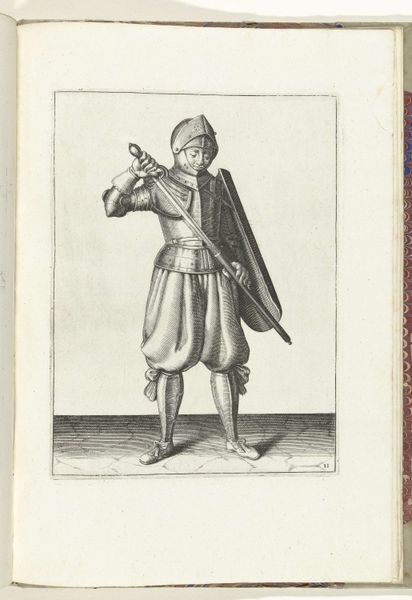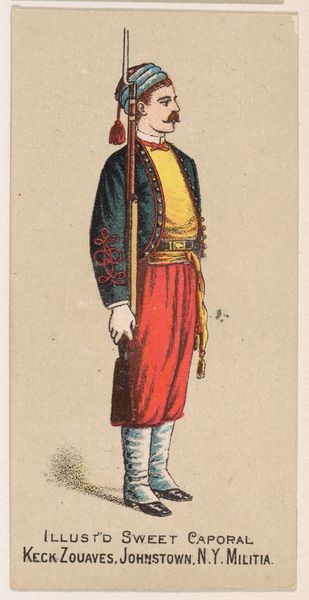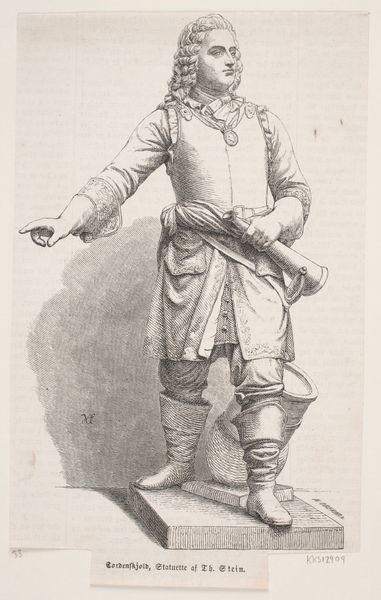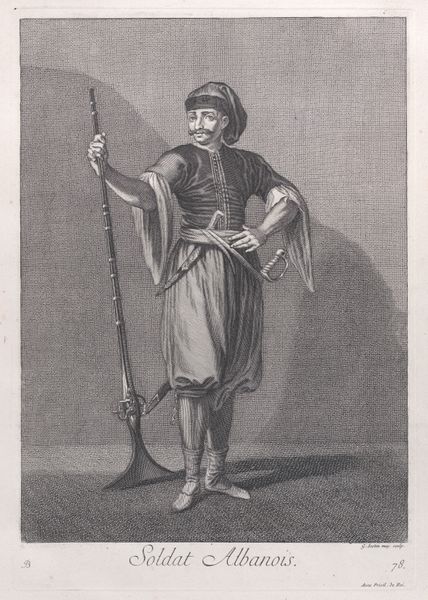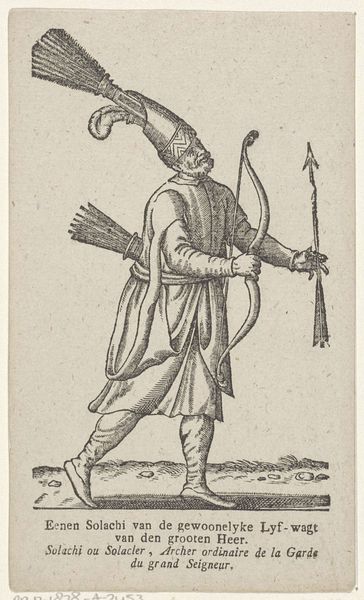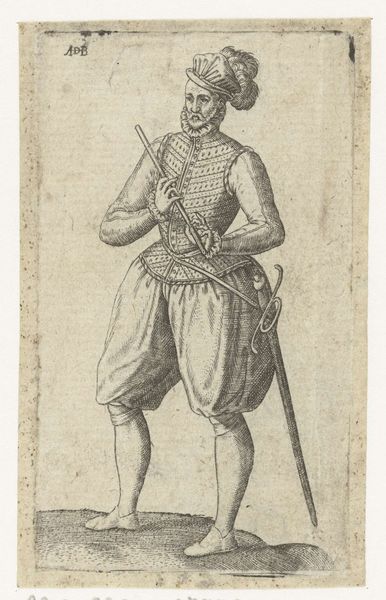
print, engraving
#
portrait
# print
#
old engraving style
#
figuration
#
romanticism
#
orientalism
#
19th century
#
history-painting
#
academic-art
#
engraving
Dimensions: height 176 mm, width 122 mm
Copyright: Rijks Museum: Open Domain
Curator: This is "Man in oosterse kleding," an engraving by Jacob Ernst Marcus, made sometime between 1784 and 1826. It’s currently held here at the Rijksmuseum. Editor: It’s striking! There's something almost theatrical about the way the figure is presented. The stark light and shadow emphasize the textures of the fabrics. It looks austere. Curator: The print aligns with a broader European fascination of that era – what we often call Orientalism. It's part of a long history of representing non-Western cultures through a Western lens. What do you see in terms of materials and the labor that went into this work? Editor: Well, engravings are very labor-intensive. Think about the meticulousness required to create these fine lines. I'm fascinated by the ways Marcus used the medium to replicate textures - the wool-like turban, the sheen of what looks like watered silk on his waist sash, the matte of the breeches. It’s an interesting take on how the exotic was packaged and presented. Curator: Exactly! Consider the title beneath the image. The term "Barbarijsche Scheeps Kapitein," or Barbary ship captain, carries so much cultural baggage, casting the subject into a stereotypical role, more imagined than real. It’s interesting that even the caption underscores a very specific European fantasy, even an anxiety, surrounding these figures. Editor: And the clothing is, of course, central to the whole image! You can see the social history written on his body: fabrics, cut, style… each signifying status and geographical origins as viewed by 19th century Europe. Those Turkish trousers! Curator: Yes! The textiles signify cultural exchange – or perhaps more accurately, appropriation and distortion. And his accoutrements, especially his swords, speak to notions of power and threat so prominent in depictions of North Africans during the period. Editor: It is a powerful statement on image-making, the colonial gaze, and how objects can be employed to enforce narratives, making it a very rich example of the function of material in culture. I see the social and cultural history you describe just by how Marcus handles these physical elements. Curator: Precisely, thinking about that tension allows us to grapple with the complex and often troubling relationship between Europe and the rest of the world during that time. Editor: A potent reminder that the materials aren’t simply neutral representations. Curator: Agreed. "Man in oosterse kleding" offers valuable insight into how visual culture was used to reinforce a particular worldview.
Comments
No comments
Be the first to comment and join the conversation on the ultimate creative platform.
